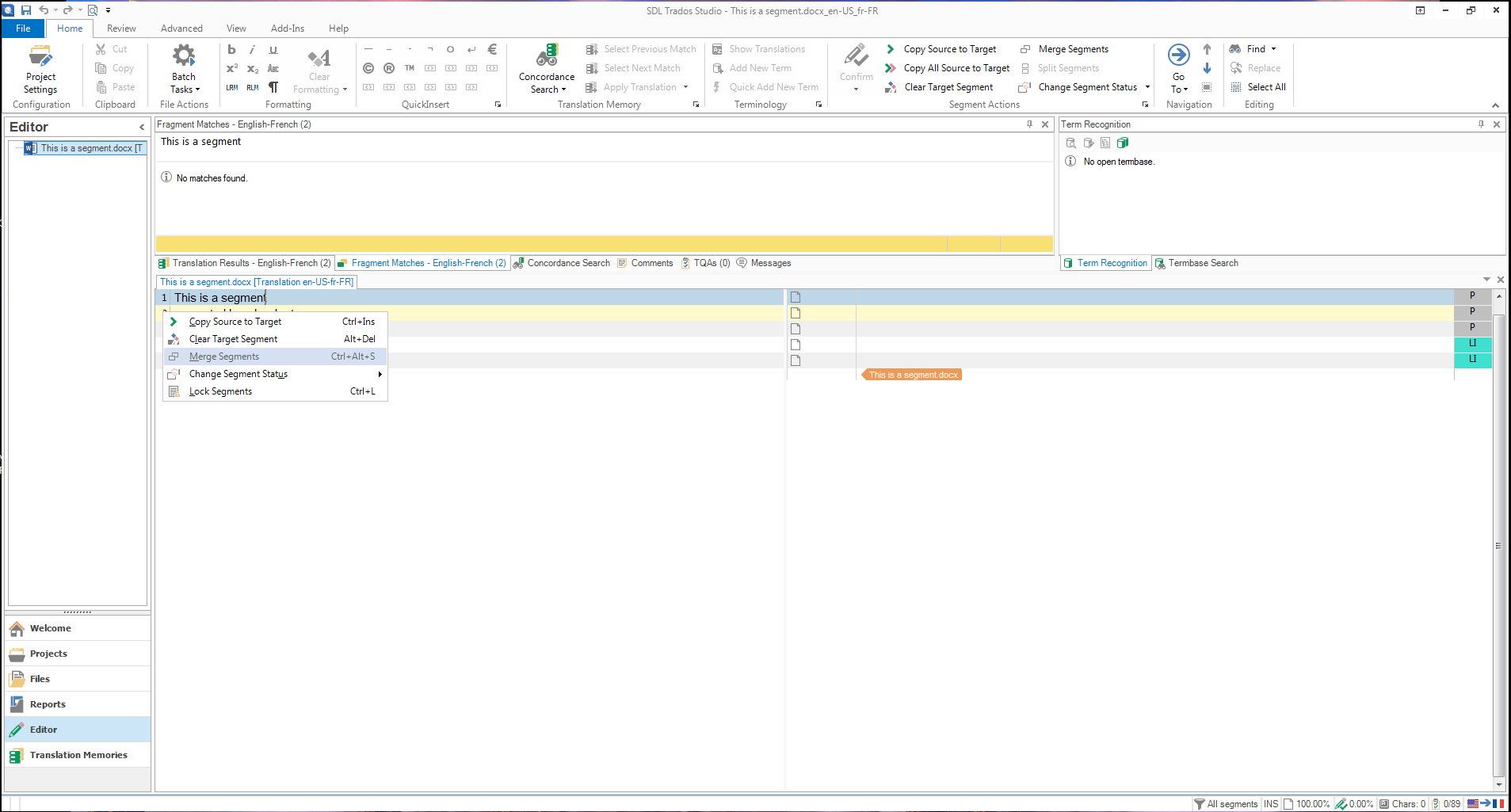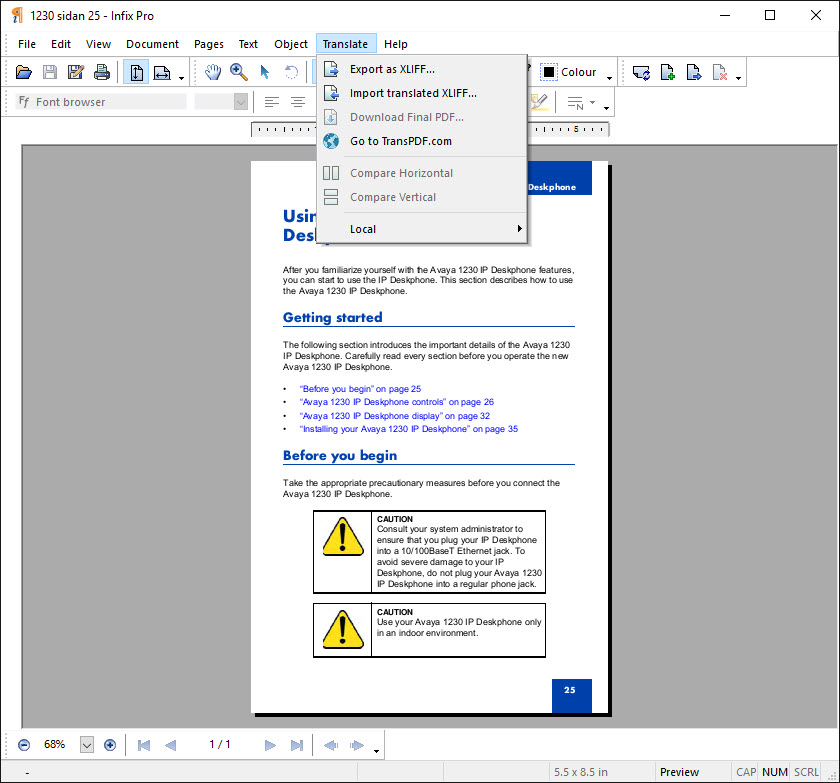
What’s more, studioViews also enables you to save virtually merged files as a single SDLXLIFF, which helps to reduce the number of files you need to manage. This app provides you additional flexibility to split the translatable content however you see fit. To put this in real terms, you could manually select the segments you want to feature in your “view” in the Studio editor and use studioViews to export just the ‘selected segments’, or you could even use the Advanced Display Filter for example, to identify the content you would like in your “view” and export all the ‘visible segments’. Users can create their customized “views” by splitting or merging files from either the Files view within Studio, or by opening up the files individually in the Studio editor and then creating a new “view” based on their segment selection. With this new app we have also introduced the concept of “views”- rather than simply splitting or merging your files, studioViews enables you to create a customized “view” of your translatable content which you can then save as a file and send for translation or review.
Merge files trados studio 2017 update#
Being based on rather old technology means the application can be quite ‘challenged’, its user interface is quite dated and what’s more, once the file has been split, there is no quick and easy way built into the app that helps you to manage and update the original projects with the split files that have been translated and delivered back to you.įirst and foremost, as you would expect, the new studioViews user interface is much cleaner and easier to navigate. Whilst this app successfully does what it set out to do - to split and merge files - and is still available on the SDL AppStore, it does have its limitations. Users can choose to benefit from this technology from within Studio itself, or through a standalone app, meaning files can be split and merged without even having Studio open. This can be beneficial to other community members reading this thread.Before I introduce this new app however, I just thought I would mention an existing app that you may have come across before called ‘SDL XLIFF Split/Merge’ first published back in 2009 and regularly updated over the years, this was one of the first apps we developed to help users split and merge files in Studio. This will display all files from your current location. In the File name dialogue box type and press Enter. Please remember to click "Mark as Answer" the responses that resolved your issue, and to click "Unmark as Answer" if not. Open your Translation Memory in SDL Trados Studio's Translation Memories view.

in Studio - Opening an SDL Trados GroupShare Project - SDL Trados GroupShare email notifications - Checking out file(s) for translation - Opening a file for translation. So if you couldn't find these files, please check if you have installed the vc++ redistributable package with the right version.įor example, MFC files are missing in vs2017, you could reinstall vs2017 with MFC features and check again. SDL Trados Studio 2017 for the Translator - Introduction to SDL Trados Studio 2017. These files are redistributed with VC++ package. And I found it in my computer.Īnd for vs2017, there has no such a document, but these files exist in vs installation folder\VC\Redist\MSVC\0\MergeModules. (Only non-debug versions of Visual C++ DLLs may be redistributed.). > Where are the MSM files for the Visual C++ redistributable for Visual Studio 2017?ĭocument, for vs2015, when Visual Studio is installed, the merge modules are installed in \Program Files\Common Files\Merge Modules\. Git attempts to resolve these changes by using the history in your repo to determine what the merged files should look like. When you merge one branch into another, file changes from commits in one branch can conflict with the changes in the other. Which the MFC library was "Microsoft_VC140_MFC_x86.msm" - however what I assume that I should be using is named "Microsoft_VC150_MFC_x86.msm"!ĭoes anyone else find this confusing/irritating? Visual Studio 2019 Visual Studio 2017 Visual Studio 2015.
Merge files trados studio 2017 windows#
So one would assume that the libraries would be named something like "Microsoft_VC141_MFC_x86.msm" - the old one for Visual Studio 2015 had a toolset name of " Visual Studio 2015 - Windows XP (v140_xp)" for


I am using the following toolset in Visual Studio " Visual Studio 2017 - Windows XP (v141_xp)" Note: An intermediary (SDL XLIFF) document to verify might contain a number of individual documents, as SDL Trados Studio 2017 allows you to merge several native files into one intermediary master document. Not only is the type of Visual Studio (Community) that I am using in the path name but there is a version number and nothing to indicate the library name. StackOverlow thread indicates that they can be found in:Ĭ:\Program Files (x86)\Microsoft Visual Studio\2017\Community\VC\Redist\MSVC\8\MergeModulesĬ:\Program Files (x86)\Microsoft Visual Studio\2017\Community\VC\Redist\MSVC\7\MergeModules C:\Program Files (x86)\Common Files\Merge Modulesīut unless we should use the old redistributables they seem to be missing.


 0 kommentar(er)
0 kommentar(er)
